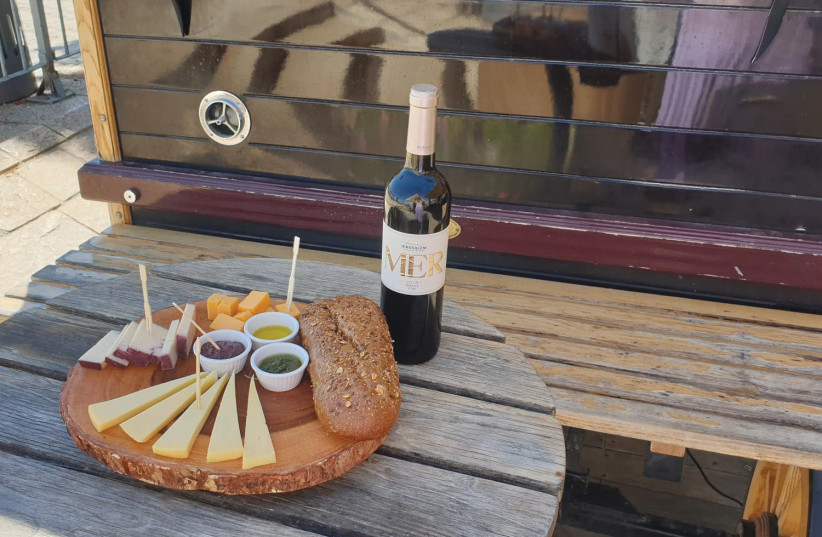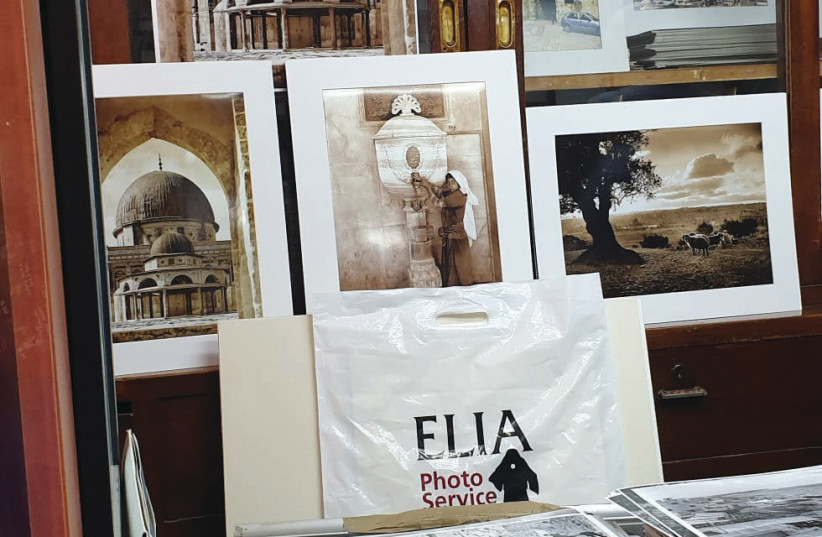Allow me to state the obvious: Summers are hot in Israel. Very hot. And yet in Jerusalem, where the climate is dry, the air can be much more comfortable – especially at night. If you have a 24-hour block of time available this summer, I highly recommend spending your next getaway in Jerusalem.
1. Montefiore Windmill
My recent trip to the capital began at the Montefiore Windmill in Mishkenot Sha’ananim, which overlooks the Old City. The windmill was originally built in 1858 as a flour mill, but today the site functions as a tourist attraction and includes a small museum. At the museum, you will learn about the story of Sir Moses Montefiore, who initiated and raised the money for the construction of the windmill.
The site also functions as a wine-tasting room and visitor center for the Jerusalem Vineyard Winery. The winery’s vineyards are spread all around Israel – including Samaria, Judea, the Jerusalem Hills and the Carmel. All the wines produced from these grapes can be tasted at the Jerusalem visitor center, along with light refreshments.
The Jerusalem Winery, which was founded in 1870, produces four million bottles of wine a year and offers five series, each of which includes between three and six strains. The wines, which have a mehadrin kashrut certification, have won many prizes.

Wine tasting: 20 minutes. NIS 30 per person.
2. New Gate
Next on our itinerary was a special guided tour of the New Gate in the Old City. It is called thus since it is not quite as old as the other gates, which were constructed along with the outer wall in the 16th century. At the end of the 19th century, this newer gate was added at the behest of Christians who were hoping to alleviate travel for pilgrims making their way between the holy Christian sites inside the Christian Quarter and their residences north of the Old City, including the Russian Colony and the Chapel of Notre Dame. Up until then, the pilgrims would exit the Old City from either the Jaffa Gate or the Damascus Gate, but then in 1889, Sultan Abd Al-Hamid agreed to construct a new gate, as long as the gate would be named after him. (It was named after him, but the “New Gate” was the more popular name.)
Our tour of the Armenian Quarter was led by Yael Livni, who works with an organization called This Is Jerusalem, which is managed by Dana Hafzedi. During the tour, we were entranced by stories about the people who lived within the walls of the Old City in previous generations. Afterwards, we were offered tastes of delicacies from various Jewish communities.
3. New Gate performances
Every Wednesday in August at 7:30 p.m., guests are treated to interesting lectures and fascinating performances. Every Thursday in August, from 5 to 8:30 p.m. there are children’s shows, street performances, creative workshops and a wide variety of activities for the whole family.
Details: www.thenewgate.co.il.
4. Armenian artisanal crafts
Just 120 meters from the New Gate, to the left, you’ll find the lovely shop owned by George and Doron Sandroni, who create handmade Armenian artisanal crafts. For 40 years, they have been using traditional methods, without any modern technology, to create tiles and kitchen crafts. Visitors are welcome to watch them work – it’s quite fascinating. And if you ask George about his personal story, he’ll be happy to tell you all about his life. Even better, you can join a two- or three-hour workshop and learn how to paint ceramic objects using age-old techniques. They’ll then place your piece in the kiln, after which you can take your work of art home.
Price: NIS 150 per person
Details: 050-599-1121

5. Elia Photo
After finishing the Armenian artisanal craft workshop, we continued straight, and then turned left, where we encountered Elia Photo, a quaint shop that was established by Elia Kahvedjian. There, you’ll see historical photographs that were taken in Israel during its pre-state days. There are photos that extend from 1860 until the present time.
Kahvedjian, a genocide survivor from Armenia, was only five when he saw 163 family members murdered before his very eyes. American aid agencies gathered any orphaned children they found and sent them to orphanages around the world. That is how Kahvedjian ended up in Nazareth. One of his teachers at the orphanage was a photographer, and through him Kahvedjian learned photography. In his store, visitors can see photographs that were taken as far back as 1920.
When he turned 16, Kahvedjian moved to Jerusalem and opened up his own photography studio, which burned down in the 1948 riots. Luckily, he was forewarned about the attack and was able to escape to safety with his most precious photographs. In 1949, he reopened his business at 14 Ma’alot al-Hankah, where the shop is located to this day.
When we entered the shop, we noticed the pungent metallic-like odor of film developers, which immediately took me back to earlier days. Kahvedjian passed away at the age of 89, and since then, his grandson has been managing the business. On the walls of the shop, you can see photographs of famous figures, such as Ze’ev Jabotinsky and Rabbi Abraham Isaac Kook, as well as other figures who played a role in the establishment of the State of Israel. In short, a visit to Elia Photo is a must.
Details: (02) 628-2074
6. Food Truck Festival
The tour of the Old City continued on to the Church of the Holy Sepulchre, where we heard fascinating stories, then for a lunch of tasty kebabs, and short stops at a number of quaint spice and gift shops along the way.
From there, we continued on toward the Inbal Hotel, one of the capital’s finest hotels, for a short rest and a dip in the pool. This was a fantastic way to cool down quickly. The spacious hotel offers high-quality service, and its breakfast spreads are incredible.
After our short rest, we attended the Food Truck Festival, taking place every Tuesday through Thursday until August 25, from 6-11 p.m. in the Hinnom Valley. Have a taste from a selection of food trucks, separated into dairy and meat sections (not too much available for vegetarians, unfortunately.) There is also a DJ spinning. Prices range from NIS 30-40. The evenings are organized by the Jerusalem and Heritage Ministry, Jerusalem Municipality, Jerusalem Development Authority and Kapayim.
Translated by Hannah Hochner.
